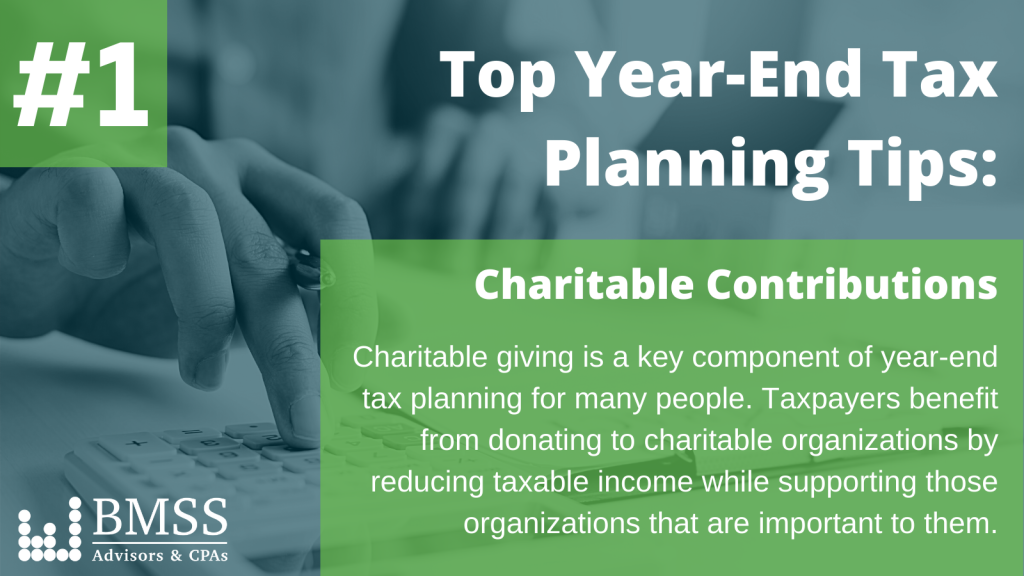
Throughout the month of December we will share our Top Year-End Tax Planning Tips. Below is the first in the series.
Charitable giving is a key component of year-end tax planning for many people. Taxpayers benefit from donating to charitable organizations by reducing taxable income while supporting those organizations that are important to them. Through the CARES Act in 2020, both individual and corporate taxpayers can now take advantage of that deductibility at an even greater benefit than in previous years.
Cash Donations
The CARES Act instituted a $300 deduction for qualifying charitable contributions made by individual taxpayers who do not itemize their deductions. A qualifying deduction will be a cash contribution made to a qualifying organization during the 2020 calendar year. A donation to a donor advised fund (DAF) does not qualify for this new deduction.
The CARES Act also increased adjusted gross income (AGI) limitations for certain qualifying charitable deductions for individuals and corporations. Individuals can elect to deduct up to 100% (rather than the existing 60%) of their 2020 AGI. Corporations can deduct up to 25% (rather than the general limitation of 10%) of taxable income. The new AGI limits are only applicable for cash contributions to public charities. Contributions of property or interests in property, and any contributions made to non-operating private foundations or donor advised funds are not eligible for the 100% AGI limitation. Any cash gifts exceeding the AGI limitation can be carried forward for five years.
Non-cash Donations
Taxpayers can deduct contributions of property made to qualifying organizations. The most tax-advantaged contributions of property are contributions of long-term capital gain (LTCG) property to public charities. The appreciation in the property avoids taxation to the donor, and a deduction is allowed for the amount of the fair market value of the property, limited to 30% of the AGI of the donor. Amounts greater than the 30% limit may be carried forward for five years. The current year deduction amount for LTCG property donated to private foundations is limited to 20% of AGI.
The deduction amount for donations of short-term capital gain property or ordinary income producing property is generally limited to the cost of the property, and thus, does not provide the same tax advantage as LTCG property.
As noted above, the 100% of AGI limitation for 2020 does not apply to non-cash contributions.
Qualified Charitable Distributions (QCD)
Taxpayers that are 70½ years or older can make contributions, up to $100,000, by a direct payment from their IRA to the charity. A QCD is not included in AGI or taxable income and can be used to satisfy required minimum distribution requirements of an IRA. A QCD can provide a tax benefit that might not otherwise be available to a taxpayer using the standard deduction. Also, because the QCD is not included in AGI, it can also have a positive impact on other tax items that are impacted in part by a higher AGI. As a trade-off for the non-taxable nature of the distribution, no separate charitable contribution deduction is allowed.
